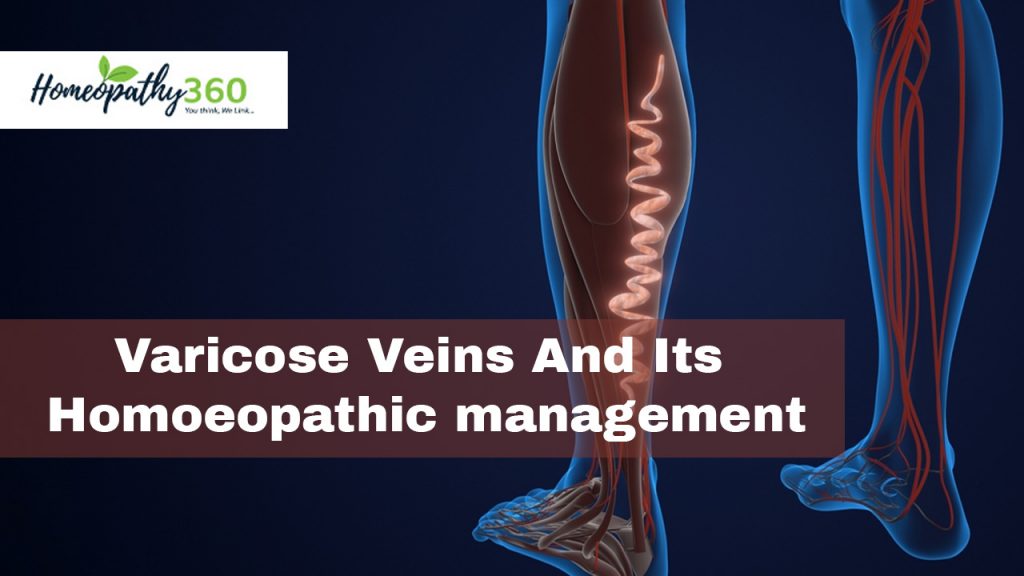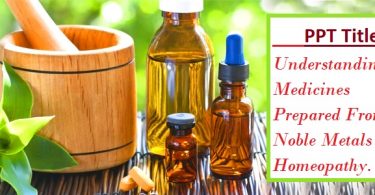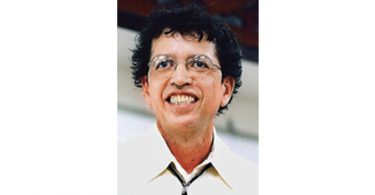
ABSTRACT-
Varicose vein disease is a condition in which the veins of the limbs become dilated and tortuous due to the inability of the venous valves to function properly. This condition can lead to complications that necessitate hospitalization. This article provides an overview of the varicose vein disease, including its etiology, its epidemiology, its pathophysiology, its clinical examination, its investigations, the complications associated with it, and its treatment, with a focus on homoeopathy.
INTRODUCTION-
Varicose veins have narrowed, tortuous veins that are bigger than three millimeters, including saphenous veins and tributaries. Age and family history are considered to be major risk factors. It’s a common clinical symptom of chronic vein disease. Despite the cosmetic issues, the superficial axial vein reflux should be looked at. For this reason, the primary diagnostic management of varicose veins is to exclude both small and large saphenous veins reflux. Varicose vein entity covers most clinical and pathological symptoms, from mild leg pain to swelling and ulcers that won’t heal.
ETIOLOGY-
Varicose veins are classified as C2 in the Clinical Classification of Clinical, Etiologic, Anatomic, and Pathophysiological (CEAP) for chronic venous disorders.
Risk factors associated with varicose veins are:
- Female sex
- Multiparity
- Body weight
- Constant constipation
- Previous history of vein thrombosis
- Work-related standing or walking
- Taking OCP or hormone replacement
- Being inactive
- Leg injury
- Pregnancy
Although there are many factors that can contribute to the development of varicose veins, there’s not enough research done on the genetic and environmental factors.
Mendelian randomization study findings revealed a positive and negative relationship between genetically predicted factors. Thus, height, BMI, smoking and circulating iron were positively associated with varicose vein development. Circulating minerals, such as calcium and zinc, showed an inverse relationship to varicose vein risk. However, several putative predictors widely reported in the literature (e.g., hypertension, menopause age, smoking, etc.) were not reported as top predictors using machine learning approaches.
EPIDEMIOLOGY –
According to the Framingham Study, up to 30% of the population has a varicose vein. The older the population, the higher chances of varicose vein incidence. The varicose vein is a global condition. Activity and lifestyle play a large role in varicose vein development. Overall, women have higher varicose vein prevalence than men.
The Framingham Study looked at varicose vein occurrence every two years over the course of 16 years. 23% percent of male and 36 % of female subjects developed varicose veins during the follow-up period. At the two-year follow-up, the incidence was between 39.4% and 51.9% per 1000. Women at 40 years of age had the highest incidence. There is a clear racial correlation with varicose veins. It is lower in Asian than non-Hispanic whites.
PATHOPHYSIOLOGY-
Varicose veins are caused by a variety of internal and external factors, such as age, gender, pregnancy, obesity, body mass index, race, dietary habits, employment, DVT history, and genetic predisposition. The main pathologies associated with varicose veins include; elevated venous pressure in the extremities, and defective or incompetent valves leading to reflux and, consequently, elevated venous pressure in the extremities. It is uncertain whether venous hypertension or valvular incompetence occurs prior to irreversible changes in venous wall development, or the opposite is true. Additionally, several pathophysiological mechanisms (hypoxia, cell hyperplasia, dysregulated apoptosis) may modify and alter the combination of extracellular matrices at the cellular level of the involved vein.
Incompetence of venous valves results in a backward transmission of the pressure gradient. This pressure gradient would normally be transferred from the deep vein to the superficial vein system via the saphenofemoral junction (SFJ) and perforator veins. The most frequent site for incompetent venous valve is the under-knee large saphenous veins. Furthermore, venous pressure has been associated with the progression of venous vein disease. Consequently, any conditions with elevated intra-abdominal pressures, such as pregnancy and obesity, in individuals with incompetent lower leg valves may increase the risk of varicose venous disease. Furthermore, a small number of genetic syndromes have been associated with varicose veins disease. Consequently, the relationship between Klippel-Trenaunay syndrome and varicose vein disease is well-documented.
CLINICAL FEATURES-
SYMPTOMS –
- Leg heaviness
- Itching
- Cramps
- Mild tenderness
- Skin discoloration
- Exercise intolerance
- Leg fatigue
SIGNS-
Inspection (should be done in standing position)
- C0 – no palpable or visible signs of venous disease
- C1 – Telangiectasies (spider veins) or reticular veins ( small veins that appear blue or green in colour)
- C2 – varicose veins
- C3 – edema
- C4a – pigmentation and eczema
- C4b – Lipodermatosclerosis (inflammation of the fat layer) and Atrophie blanche (white scarring)
- C5 – healed venous ulcer
- C6 – active venous ulcer
INVESTIGATIONS-
- Hand held doppler
- Colour duplex venous ultrasound imaging
- Contrast venography
- Plethysmography
TREATMENT-
- Compression stockings
- Leg elevation
- Oral pain medications.
- Cyanoacrylate glue
- Endovenous laser ablation
- Radio Frequency Ablation
- Microsclerotherapy
- Injection sclerotherapy
DIFFERENTIAL DIAGNOSIS-
- Lymphedema
- Deep vein thrombosis
- Cellulitis
- Stasis dermatitis
COMPLICATIONS-
- Eczema and dermatitis
- Thrombophlebitis
- Venous ulcers
- Periostitis
- Hemorrhage
HOMOEOPATHIC MANAGEMENT-
Symptomatic indication of some homoeopathic medicines –
- ARNICA MONTANA – Sore, bruised extremities. Fear of touch or contact. Heaviness in all extremities. Hands veins distended.
- ARSENIC ALBUM – Heaviness in legs with intense burning pain.
- CALCAREA CARBONICA – Varicose veins with intense burning in veins. Cramps in calves when stretched out at night. Feet raw and burning. Cold, damp feet that feel like you have been wearing wet stockings.
- CALCAREA FLUORICA – Enlarged, hard varicose veins. Varicose veins are knotted. Veins dilate, and become varicose inflamed. Dry, cracked, skin on legs.
- CARBO VEGETABILIS – It acts upon venous circulation and capillaries. Varicose veins during pregnancy.
- FLUORICUM ACIDUM – Varicose veins and ulcers with red edges and vesicles especially of lower limb, worse warmth..
- HAMAMELIS – Venous congestion, varicose veins and hemorrhage with bruised soreness of affected part. Varicose ulcers very sore and burn. It causes venous relaxation with engorgement.
- MILLEFOLIUM – Varicose veins during pregnancy when painful. Leg ulcerates and bleeds in pregnant women, Capillary are spongy and enlarged, veins break easily when congested.
- NUX VOMICA – Numbness in legs, feel paralyzed, cramps in calves and sole.
- PLUMBUM METALLICUM – Cramps in calves, dilated veins of forearm and legs. Stinging, tingling and tearing in limbs.
- PULSATILLA – Varicose veins, painful. Veins full, varicose and painful. Boring pain toward evening. Drawing pain in thighs and legs, with restlessness, sleeplessness and chilliness. Vein in forearms and hands swollen. Varicose veins during pregnancy.
- PYROGENIUM – Throbbing in vessels of neck with numbness of hand, arm and feet. Skin discolored and dry.
- SULPHUR – Unhealthy skin, breaks out, dry scaly. Varicose veins, ulcerate, rupture and bleed easily. Every little injury suppurates. Heaviness and paretic feeling in limbs.
- VIPERA – Varicose veins, with bursting pain. When they are allowed to hang the legs down it seems as if they would burst and the pain is unbearable. Elevating the legs brings relief. Veins are swollen, sensitive, and bursting. Severe cramps in lower limbs.
- ZINCUM METALLICUM – Large varicose veins on legs. Formication in feet and legs as from a bug crawling over the skin, preventing sleep. Restless leg, restless feet in continued motion, cannot keep them still. Varicose veins of genital organs.
REFERENCES-
- Available from – https://www.ncbi.nlm.nih.gov/books/NBK470194/
- Available from – https://www.hopkinsmedicine.org/health/conditions-and-diseases/varicose-veins
- Shenoy K.R, Shenoy A.S. Manipal manual of surgery. New Delhi: 4th ed. CBS publishers and distributors Pvt Ltd; 2014
- Murphy, R. (2010). Lotus materia medica. 3rd ed. New Delhi: B.Jain
- Boericke W. New Manual of Homoeopathic Materia Medica and Repertory. Reprint Edition New Delhi: B. Jain Publishers(P)Ltd.; 2011
About the Author:
Dr. Usha Dhurve
MD Scholar (Department of organon of medicine and homoeopathic philosophy)
HOD- Dr. Babita Shrivastava
Guide- Dr. Geeta Tiwari
Government Homoeopathic Medical College & Hospital, Bhopal M.P




